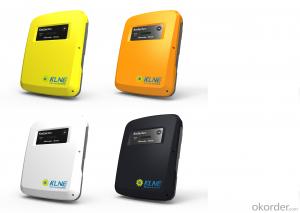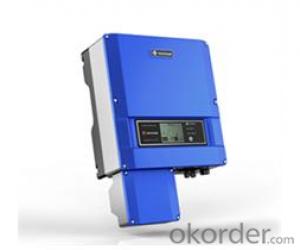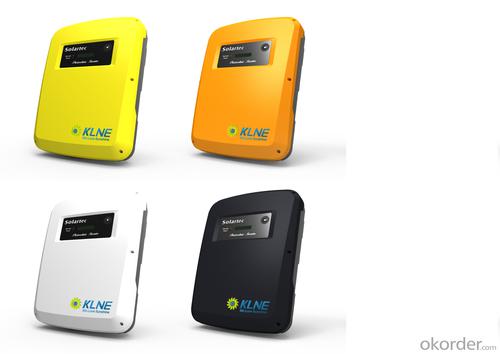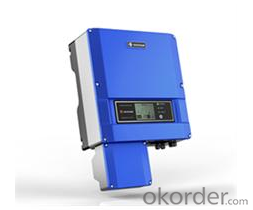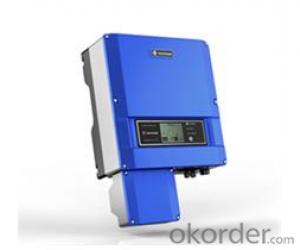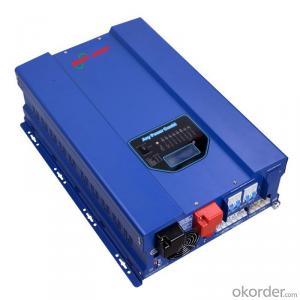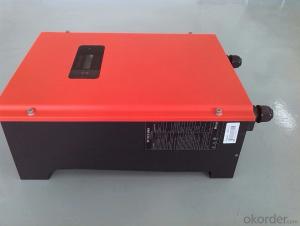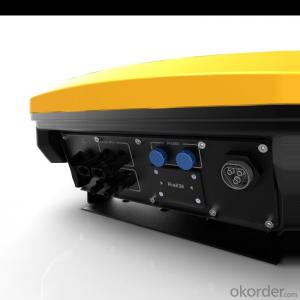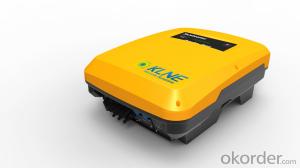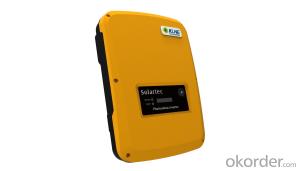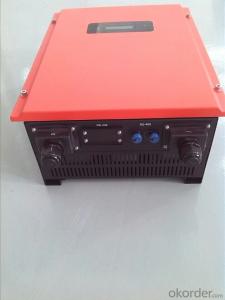50 Kw Solar Inverter Off-Grid Type Solo-200 Series
- Loading Port:
- Shanghai
- Payment Terms:
- TT OR LC
- Min Order Qty:
- 10 unit
- Supply Capability:
- 1000 unit/month
OKorder Service Pledge
OKorder Financial Service
You Might Also Like
Product Description:
This system can keep 5 energy-saving bulbs with 20W working for 5 hours per day and two 5W radios working for 8 hours a day.
Output voltage:5V d. c. (USB port) / 12V d. c.
It can work for 3 successive rainy days.
● System voltage:12V
Ø
● Charge and discharge current:20A
Ø
● Power:200W
Ø
● Dimensions of box:650*250*445mm
Ø
● Net weight of the box:13kg
Ø
● Output DC current:7 phases Product Datasheet:
Main accessories | Specifications | No. | Notes |
Box | High-quality rolled steel | 1 | Standard box, optional colors |
PV modules | Polysilicon 100Wp | 2 pieces | Optional |
Storage battery | Lead acid, maintenance-free, 220Ah | 1 piece | Optional |
Controller | Solo-LS1524S 15A | 1 unit | Standard |
PV accessories shelf | Simple type | 1 set | Optional |
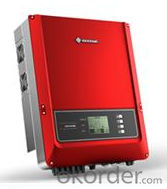
Product Advantages:
Powered by DC current
Can used out of doors
High effiency and low noise
FAQ
What is your payment terms?
We accept T/T payment, normally we need 20% T/T in advance, 80% payed before shipment.
What is your packing system?
We put the sistem in the wooden box.
Can you do OEM service?
Yes we can, but we need to do it with a certain order quantity.
- Q: How does a solar inverter handle power quality disturbances?
- A solar inverter handles power quality disturbances by monitoring the incoming power from the solar panels and adjusting its output accordingly. It uses various control mechanisms to regulate voltage and frequency, ensuring that the power generated by the solar panels is synchronized with the grid. This helps in maintaining a stable and high-quality power supply, minimizing the impact of disturbances such as voltage fluctuations or frequency variations. Additionally, some advanced solar inverters also offer features like grid support functions and reactive power compensation to further enhance power quality.
- Q: Can a solar inverter be used with different types of solar cell technologies?
- Yes, a solar inverter can be used with different types of solar cell technologies. Solar inverters are designed to convert the DC electricity generated by solar panels, regardless of the type of solar cell technology, into AC electricity that can be used to power homes and businesses. Therefore, whether it is monocrystalline, polycrystalline, thin-film, or any other solar cell technology, a solar inverter can efficiently convert the generated electricity into usable form.
- Q: Can a solar inverter be used with a solar-powered swimming pool heater?
- Yes, a solar inverter can be used with a solar-powered swimming pool heater. A solar inverter is responsible for converting the direct current (DC) energy produced by solar panels into alternating current (AC) energy that can be used to power appliances and devices. In the case of a solar-powered swimming pool heater, the solar panels generate DC energy from sunlight, which is then converted into AC energy by the solar inverter. This AC energy can be used to power the swimming pool heater and heat the pool water using solar energy.
- Q: Can a solar inverter be used with different types of tracking systems?
- Yes, a solar inverter can be used with different types of tracking systems. The function of a solar inverter is to convert the DC (direct current) generated by the solar panels into AC (alternating current) that can be used to power electrical devices. As long as the tracking system is capable of generating DC power from the solar panels, the solar inverter can be used to convert it into usable AC power.
- Q: Can a solar inverter be used in areas with high dust and dirt accumulation?
- Yes, a solar inverter can be used in areas with high dust and dirt accumulation, but it is important to take certain precautions and maintenance measures to ensure its proper functioning. Dust and dirt can accumulate on the surface of the solar panels, reducing their efficiency over time. This can also affect the performance of the solar inverter since it relies on the energy generated by the solar panels. To mitigate the impact of dust and dirt, regular cleaning of the solar panels is essential. This can be done by using a soft brush or sponge and mild detergent mixed with water. It is important not to use abrasive materials or excessive water pressure, as this can damage the panels. Additionally, installing the solar panels at an angle and positioning them to face the sun can help in reducing the accumulation of dust and dirt. Moreover, some solar inverters are designed with built-in protection against dust and dirt. These inverters usually have IP65 or higher ratings, which means they are dust-tight and can withstand water jets. Choosing such inverters can provide an added layer of protection against the adverse effects of dust and dirt accumulation. Overall, while a solar inverter can be used in areas with high dust and dirt accumulation, regular maintenance and proper cleaning of the solar panels are crucial to ensure optimal performance and longevity of the system.
- Q: What are the communication protocols used in solar inverters?
- The communication protocols commonly used in solar inverters are Modbus, SunSpec, and DNP3. These protocols enable the inverters to communicate with other devices and systems, such as monitoring software, energy management systems, and smart grids, to exchange data and control commands.
- Q: What is the maximum current output of a solar inverter?
- The maximum current output of a solar inverter depends on its size and specifications. In general, smaller residential inverters may have a maximum output current of around 8-12 amps, while larger commercial or utility-scale inverters can go up to several hundred amps. It is important to select an inverter that matches the specific requirements of the solar PV system to ensure optimal performance and safety.
- Q: How does a solar inverter handle voltage unbalance?
- A solar inverter handles voltage unbalance by continuously monitoring the grid voltage levels and adjusting its output accordingly. If it detects any voltage imbalance, it dynamically regulates the output voltage to balance the system. This ensures that the inverter operates within the acceptable voltage limits, prevents damage to the connected devices, and maintains efficient energy conversion.
- Q: Can a solar inverter be used in areas with unstable grid power?
- Yes, a solar inverter can be used in areas with unstable grid power. Solar inverters are designed to convert the DC power generated by solar panels into AC power for use in homes or businesses. In areas with unstable grid power, a solar inverter can help stabilize the electricity supply by utilizing the solar energy generated. It can operate independently or in conjunction with the grid, providing a reliable power source even during grid outages or fluctuations.
- Q: What are the advantages of using a transformerless solar inverter?
- One advantage of using a transformerless solar inverter is increased efficiency. Transformerless inverters have a higher efficiency rating compared to inverters with transformers, which means more of the solar energy is converted into usable electricity. Additionally, transformerless inverters are lighter and more compact, making them easier to install and transport. They also tend to have a longer lifespan and require less maintenance compared to inverters with transformers.
Send your message to us
50 Kw Solar Inverter Off-Grid Type Solo-200 Series
- Loading Port:
- Shanghai
- Payment Terms:
- TT OR LC
- Min Order Qty:
- 10 unit
- Supply Capability:
- 1000 unit/month
OKorder Service Pledge
OKorder Financial Service
Similar products
Hot products
Hot Searches
Related keywords
